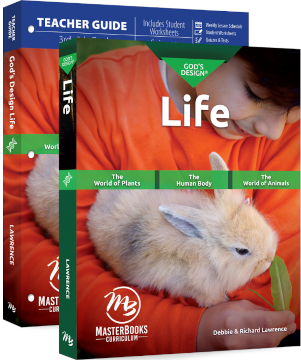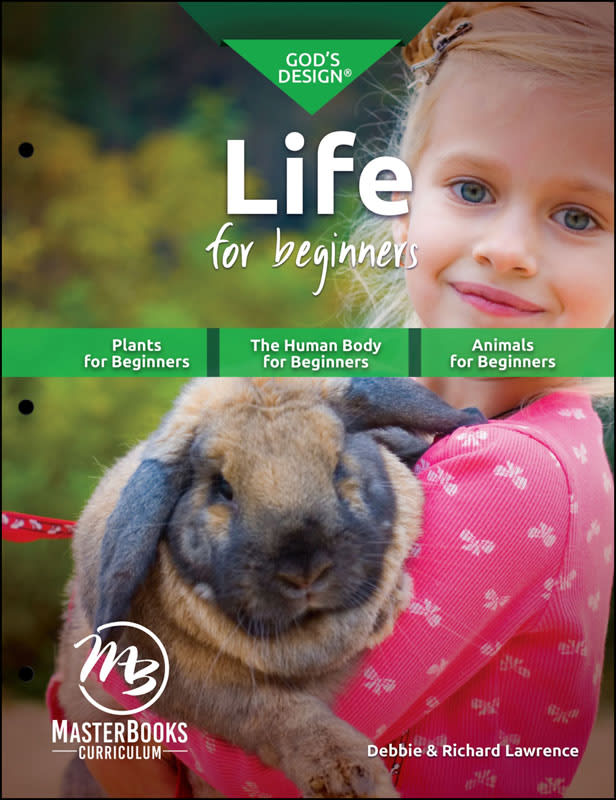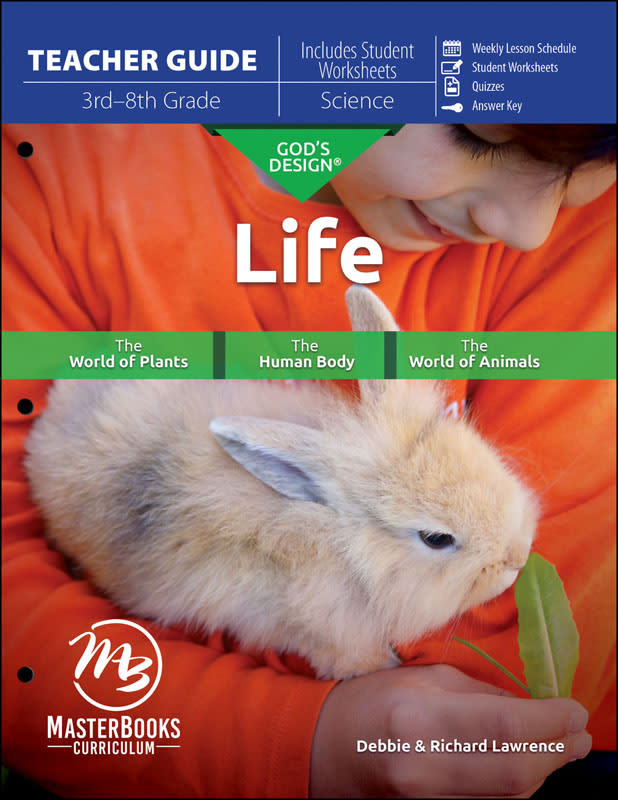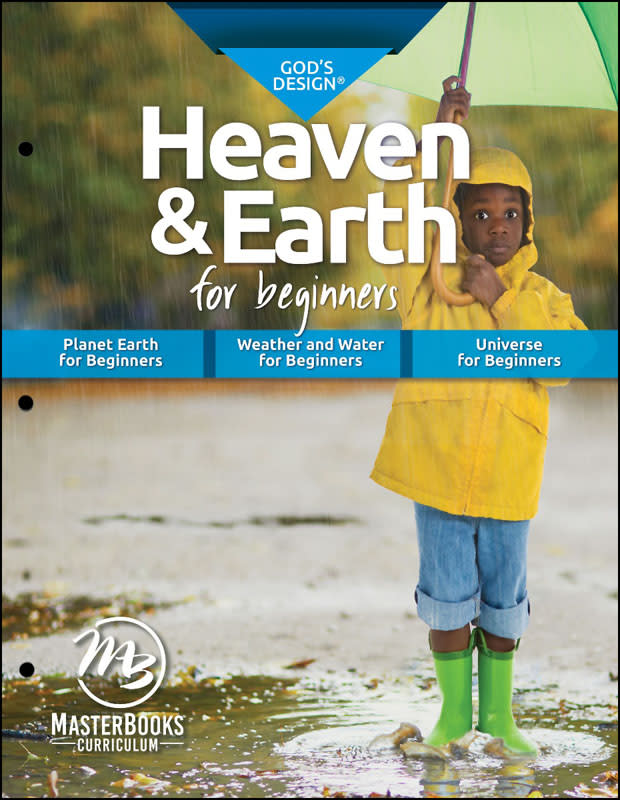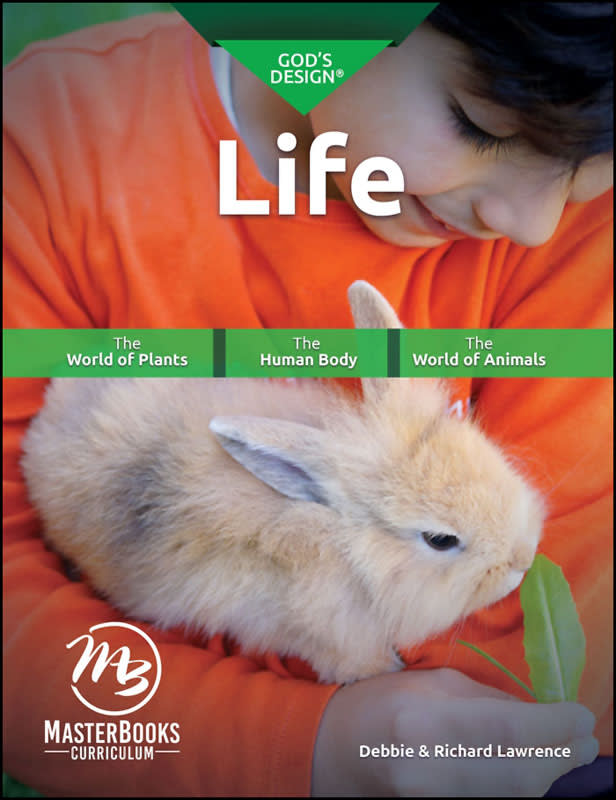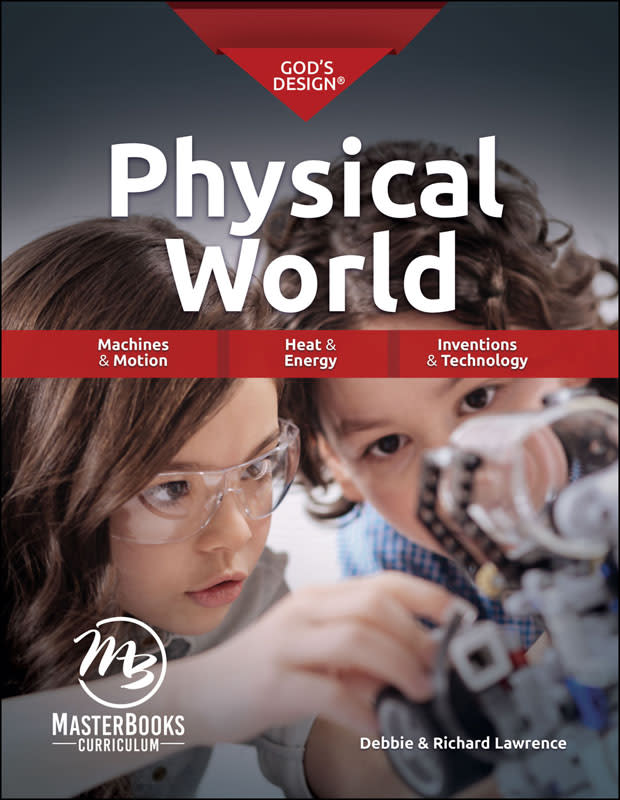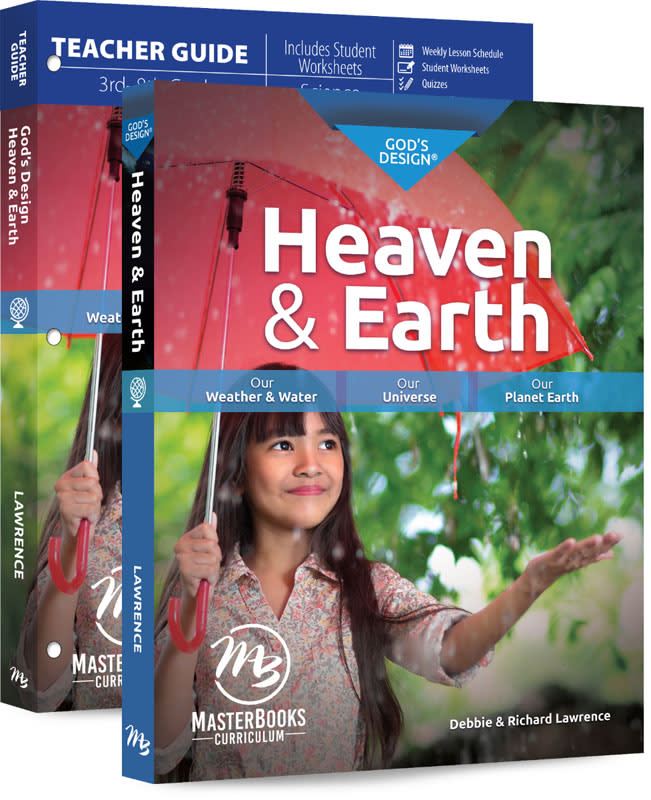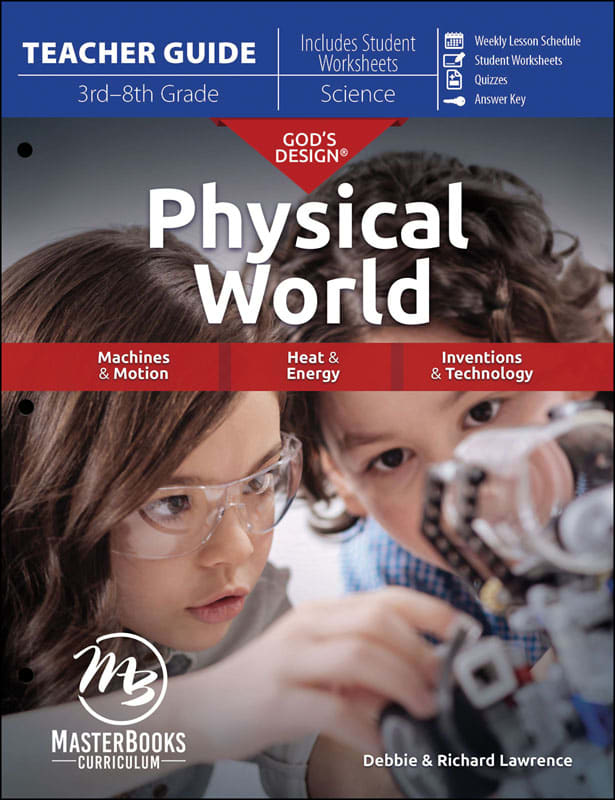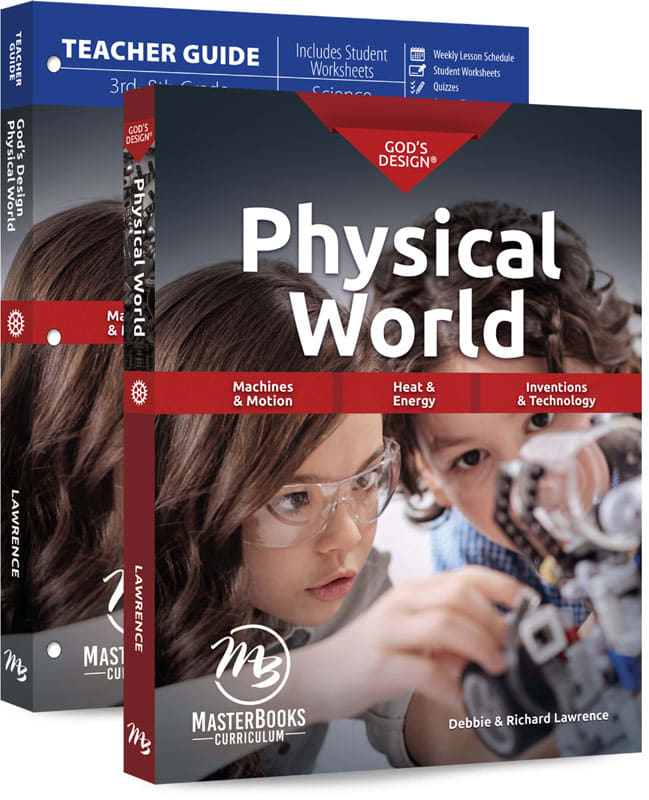The God's Design Science series is an outstanding program for children in grades one through eight. Two courses—labeled “for Beginners”—are for first and second grade. The other four courses can be used with students in grades three through eight, although they are best for grades four and up. They are not specified for a particular grade level.
Each course studies only three topics, going in depth on each one. (These courses were originally published as sets of three books, but the three books are now combined into one.) For example, the first of the three topics in God’s Design: Life is the world of plants. It has six units, containing 35 lessons, on many different subtopics related to plants. The other two topics in that book are the human body and animals, and there are another six units with 35 lessons for each of those topics. Each topic’s lessons are followed by its own glossary.
Titles for each of the courses and their three topics are:
- Life for Beginners: Plants for Beginners, The Human Body for Beginners, Animals for Beginners
- Heaven & Earth for Beginners: Planet Earth for Beginners, Weather and Water for Beginners, and Universe for Beginners
- Life: The World of Plants, The Human Body, The World of Animals
- Heaven & Earth: Our Weather and Water, Our Universe, Our Planet Earth
- Chemistry and Ecology: Properties of Ecosystems, Properties of Atoms and Molecules, Properties of Matter
- Physical World: Machines and Motion, Heat and Energy, Inventions and Technology
The books in this series all reflect a Christian worldview, including a young-earth view of creation. Contrasts are made between evolution and creationist views when pertinent to the topic, especially in the texts related to life science and earth science
"For Beginners" Courses
The first two courses have only one book. A course schedule, supply lists, unit vocabulary reviews (that can be used as quizzes), and answer keys are included in the book. These books are consumable. Children will write, draw, and color directly in the book. It’s very self-explanatory, so no additional teaching information is needed. Instructions for hands-on activities are included.
Science usually isn’t a top priority in the early grades since you might be spending more time on reading, math, and language arts. So you might take more than a year to complete either of these courses, depending upon your priorities.
The "For Beginners" courses have an alternative schedule (free download) so that parents can use them for younger children at the same time as they use courses with the same titles for older students.
Course for Grades Three through Eight
The other four courses can be used to teach students in grades three through eight together. You can also use the alternate schedule (linked above) to teach a For Beginners course of the same title to younger children at the same time.
Each course has a student textbook and a teacher's guide. The teacher's guides each have about 400 pages. Many pages will need to be given to students or copied for their use. These include pages for students to complete for every lesson, data recording sheets for experiments and observations, quizzes for each unit, and a final exam. Teacher’s guides also have extensive information about teaching from a creationist point of view, other teaching information, a suggested schedule, supply lists, and answer keys.
Brief teaching instructions at the beginning of each textbook explain the icon-coding system used to indicate which lessons and activities are for younger or older students. Older students generally are given more information and more-challenging activities in addition to the activities completed by younger students.
These courses should be completed in one school year. You should complete three lessons per week, spending about 45 minutes per lesson with older students and less time with younger students.
The philosophical and theological information at the front of each of the teacher's guides is critical for understanding the unique perspective and design of these textbooks; this information is a must-read for teachers.
The hands-on experiments and activities that are built into every lesson are worthwhile and relate well to the topics. They are designed to teach the scientific method as children observe, record information, discuss, and form conclusions. The variety of activities effectively reaches children with different learning styles
The activities and experiments include step-by-step instructions. Supplies for the activities are generally not too difficult to obtain. For studying plants in the Life course, you will need things like yellow gelatin, bean seeds, flower bulbs, corn meal, dried moss, and bread slices—fairly easy items to find. For the Heat and Energy section of the Physical World course, the list of resources is a little more challenging with items like copper wire, iron filings, steel BBs, a compass, and a magnifying glass. Even Chemistry and Ecology uses easily available items like ammonia and rubbing alcohol, for the most part. Once in a great while, the supply list includes reference books, such as field guides for flowers, plants, and trees to be used for the study of plants.
Activities are followed by a “What did we learn?” section. These are a few key questions for students to answer to ensure that they understand the main points of a lesson. Suggested answers are provided in the teacher's guide.
Next is a "Taking It Further" section with questions that will help children extend their thinking to draw some conclusions or make additional connections or applications of what they have learned.
Older students should work on the “challenge” activities that might require additional reading, writing, or research.
Interesting biographical sketches of scientists and inventors, along with articles on special topics such as chemotherapy, artificial islands, and rattlesnakes, appear sporadically throughout each textbook.
At the end of each textbook is a final project. These projects often encompass many topics covered within various lessons, so you should check out the final project when beginning each course and consider having your child start work on the project early rather than waiting until the last week or two.
The textbooks are printed in full color with numerous, high-quality illustrations and excellent graphics. The icons and colored boxes highlight different portions of the lesson, making it easy to spot sections to be used with different grade levels.
The God's Design Science series is a practical choice for Christian homeschooling families as well as for classroom teachers in Christian schools. However, there are a few issues that you might want to consider as you use this series.
Textbooks are written to address a wide age span. Some sections of text are dense with new vocabulary. You might find that some children will have a hard time listening to and absorbing so much detail. Sometimes you will need to simplify lesson material so that students can grasp concepts. (This is a reason to wait until fourth grade to begin these four courses.)
As I read through some of the lessons, I thought that I, personally, would very likely use the experiments and activities as the basis from which I would present the lesson information rather than presenting information first. If younger children can see and touch things as they are learning they will be able to understand better than if they are listening to what (to them) sounds like abstract information. For example, in the “Our Planet Earth” section of the Heaven & Earth course, a lesson on identifying different minerals includes experiments for children to identify four or five minerals. Instead of reading through the material, then doing the testing to identify minerals, I would have the minerals on hand and talk about their different characteristics for identification while the children compare and test the different samples. This might help solve the problem I mentioned regarding information overload.
Summary
I like this combination of focused study on fewer topics. This series does a good job of accompanying information with experiments and activities plus questions to ensure understanding.




